
Salmonflies
Pteronarcys californica
The giant Salmonflies of the Western mountains are legendary for their proclivity to elicit consistent dry-fly action and ferocious strikes.
Featured on the forum

This specimen keys pretty easily to Onocosmoecus, and it closely resembles a specimen from Alaska which caddis expert Dave Ruiter recognized as this genus. As with that specimen, the only species in the genus documented in this area is Onocosmoecus unicolor, but Dave suggested for that specimen that there might be multiple not-yet-distinguished species under the unicolor umbrella and it would be best to stick with the genus-level ID. I'm doing the same for this one.

Troutnut is a project started in 2003 by salmonid ecologist Jason "Troutnut" Neuswanger to help anglers and
fly tyers unabashedly embrace the entomological side of the sport. Learn more about Troutnut or
support the project for an enhanced experience here.
Entoman on Feb 1, 2015February 1st, 2015, 9:34 pm EST
Hey Paul,
The phantom midge adults I've seen have longer spotted wings. They are a really cool (and valuable) bug. In their larval stage they are almost clear and have antennae evolved to capture and crush their favorite prey, mosquito larvae!
Looks like an exceptionally pale blood midge adult to me, but I could be wrong. How big was it?
The phantom midge adults I've seen have longer spotted wings. They are a really cool (and valuable) bug. In their larval stage they are almost clear and have antennae evolved to capture and crush their favorite prey, mosquito larvae!
Looks like an exceptionally pale blood midge adult to me, but I could be wrong. How big was it?
"It's not that I find fishing so important, it's just that I find all other endeavors of Man equally unimportant... And not nearly as much fun!" Robert Traver, Anatomy of a Fisherman
PaulRoberts on Feb 1, 2015February 1st, 2015, 10:35 pm EST
BIG! Size 16, or better. I noticed the longer abdomen on this one compared to images I could find for Chaoborus. BY "blood midge" do you mean a Chironomid? This one lacks the fuzzy antennae. Female?
Millcreek on Feb 2, 2015February 2nd, 2015, 4:04 am EST
Paul-
Here's a page from Bugguide on Chaoborus. Most are spotted but a few aren't. The ones that don't have the fuzzy antennae are the females.
http://bugguide.net/node/view/41232
Here's a page from Bugguide on Chaoborus. Most are spotted but a few aren't. The ones that don't have the fuzzy antennae are the females.
http://bugguide.net/node/view/41232
"If we knew what it was we were doing, it would not be called research, would it?"
-Albert Einstein
-Albert Einstein
PaulRoberts on Feb 2, 2015February 2nd, 2015, 2:47 pm EST
Thanks guys.
I'd seen the Bugguide images. I did find some Chironomid images that look similar too. The two have such different life histories however -the larvae in particular have such different habits. Mine came from a eutrophic warmwater pond and the food chain is nearly ruled by these guys when they emerge. The biggest bluegills in the pond sound like popcorn, and then big wakes tear through those 'gills, scattering them. Even the biggest perch and some cats get in on it. Emergences are not only important to trout fishers, although bass fishers don't seem to notice.
Considering the habitat, and the fact that some of the cats I’ve taken home from this pond contain bottom ooze and bloodworms, the best bet may be a Chironomid. I’ll look into it some more to see if there might be Chaoborus present. This particular pond does have a “deep” side –about 16ft. Not sure if that’s deep enough for Chaoborus to survive predation there. It’s one lively pond in that regard:



I'd seen the Bugguide images. I did find some Chironomid images that look similar too. The two have such different life histories however -the larvae in particular have such different habits. Mine came from a eutrophic warmwater pond and the food chain is nearly ruled by these guys when they emerge. The biggest bluegills in the pond sound like popcorn, and then big wakes tear through those 'gills, scattering them. Even the biggest perch and some cats get in on it. Emergences are not only important to trout fishers, although bass fishers don't seem to notice.
Considering the habitat, and the fact that some of the cats I’ve taken home from this pond contain bottom ooze and bloodworms, the best bet may be a Chironomid. I’ll look into it some more to see if there might be Chaoborus present. This particular pond does have a “deep” side –about 16ft. Not sure if that’s deep enough for Chaoborus to survive predation there. It’s one lively pond in that regard:



Crepuscular on Feb 2, 2015February 2nd, 2015, 4:16 pm EST
Paul I typically run into Chaoborus in association with culicidae larvae. Most often in temporary pool habitat especially in the vernal pools in the spring with Ochelerotatus canadensis, Ochelerotatus stimulans and other springtime mosquitoes and in floodwater pools in association with Aedes vexans, and Ochlerotatus trivittatus here in PA during the summer. In my experience the Chaoborus larvae that I find are only in pretty clean waters. I have some photos somewhere I can't find them right now but I'll keep looking, they might be at my office. Your photo does not look like any adult Chaborus I've ever seen but that doesn't mean much I haven't seen all that many. I usually deal with the larvae, but I have reared a few out.
Creno on Feb 2, 2015February 2nd, 2015, 4:17 pm EST
Paul - you should be happy I never found that pond - perch that size would be long gone! Best fish fry in NA! Your critter is almost undoubtedly a female Chironomus.
PaulRoberts on Feb 2, 2015February 2nd, 2015, 5:31 pm EST
Thanks, Eric. That 'clean water' comment makes some sense, allowing me to place them a bit better ecologically -possibly. I'd read of (predaceous) Chaoborus in lake basins that exhibit vertical migrations. Your comment about their association with 'clean water' has me wondering if the accounts I've read were in more oligotrophic waters. I promised myself I'd never get too deeply into the midges, lol, but I'm a curious sort, esp when fish are involved.
Thanks so much, Dave. Yes, there was a decent year class of those tasty perch in that pond. While bass fishing, I'd catch 1 to 3 11"-13"ers a trip there around 2010. I planned to just target the perch some but never did. The pond took a big hit from the nearly biblical flooding a couple years ago and I'm afraid of what I will find upon my return. I fear siltation will be devastating. :( PM sent.
Thanks so much, Dave. Yes, there was a decent year class of those tasty perch in that pond. While bass fishing, I'd catch 1 to 3 11"-13"ers a trip there around 2010. I planned to just target the perch some but never did. The pond took a big hit from the nearly biblical flooding a couple years ago and I'm afraid of what I will find upon my return. I fear siltation will be devastating. :( PM sent.
Entoman on Feb 2, 2015February 2nd, 2015, 5:46 pm EST
By "blood midge" do you mean a Chironomid? This one lacks the fuzzy antennae. Female?
Yes is my best guess to both questions, Paul.
"It's not that I find fishing so important, it's just that I find all other endeavors of Man equally unimportant... And not nearly as much fun!" Robert Traver, Anatomy of a Fisherman
PaulRoberts on Feb 2, 2015February 2nd, 2015, 6:52 pm EST
Chironomus (Lobochironomus) dorsalis?
http://www.commanster.eu/commanster/Insects/Flies/SuFlies/Chironomus.dorsalis.html

I found this strikingly similar Chironomus: Chironomus dorsalis, a species described as holarctic in distribution. I suppose if any insect group could have intercontinental species, it would be the midges.
It's described (in French) as 8mm and "rose colored"-got the size and color. I found it on a European site, but I see Chironomus dorsalis mentioned in Russia, UK, France, Italy, and a mention of “North American material” in a discussion over whether C. longipes (from Japan) and dorsalis are synonomous. (Apparently, Spies, M. and Sæther, O.A. (2004) confirmed the synonymy.)
So…mebbe*.
http://genetics.unimelb.edu.au/Martin/NACytfiles/Sp4g.htm:
A Russian paper, after karotype structure mapping, claims dorsalis:
Emergence dates range from April to November (no surprise). Mine (whatever they really were) were popping in mid-April (15th).
*(Apologies to Dave and others who might reasonably be offended by my attempts at identification via Google images… and of a Chironomid midge for Pete’s sake! In my defense I claim that I am but a lowly fisherman -whose been known to be happy with catfish. Go ahead call me a bottom feeder, a bloodworm sucker!)
http://www.commanster.eu/commanster/Insects/Flies/SuFlies/Chironomus.dorsalis.html

I found this strikingly similar Chironomus: Chironomus dorsalis, a species described as holarctic in distribution. I suppose if any insect group could have intercontinental species, it would be the midges.
It's described (in French) as 8mm and "rose colored"-got the size and color. I found it on a European site, but I see Chironomus dorsalis mentioned in Russia, UK, France, Italy, and a mention of “North American material” in a discussion over whether C. longipes (from Japan) and dorsalis are synonomous. (Apparently, Spies, M. and Sæther, O.A. (2004) confirmed the synonymy.)
So…mebbe*.
http://genetics.unimelb.edu.au/Martin/NACytfiles/Sp4g.htm:
Species 4g. Chironomus (Lobochironomus) dorsalis Meigen, 1818.
Synonym: Chironomus longipes Staeger (1839)
In North America:
Found: Ontario – (Oliver & Dillon 1990)
Florida – (Townes 1945)
Georgia – (Epler 2001)
Idaho – Coeur d'Alene Lake (Townes 1945)
Iowa – Davenport (Townes 1945)
Massachusetts – Worcester (Townes 1945)
Missouri – Atherton and St. Louis (Townes 1945)
New Jersey – Atsion, Medford Lakes, Moorestown and Westville (Townes 1945)
New York – Buffalo, Canadarago Lake, Canajoharie, Hudson, Ithaca, Niskayuna,
Oneonta, Otsego Lake, and Ringwood, Tompkins Co. (Townes 1945)
North Carolina – Raleigh (Townes 1945)
Ohio – Summit Co. (Townes 1945)
Rhode Island – Westerly (Townes 1945)
South Carolina – (Caldwell et al. 1997)
Wisconsin – Arboretum, Madison, Dane Co.
Also occurs in Europe (France? (Type locality); Denmark (Type locality of C.
longipes); England, etc.).
A Holarctic species.
A Russian paper, after karotype structure mapping, claims dorsalis:
“...should be considered as more primitive and ancestral to other cytocomplexes of the genus Chironomus Meigen, 1803.”
Emergence dates range from April to November (no surprise). Mine (whatever they really were) were popping in mid-April (15th).
*(Apologies to Dave and others who might reasonably be offended by my attempts at identification via Google images… and of a Chironomid midge for Pete’s sake! In my defense I claim that I am but a lowly fisherman -whose been known to be happy with catfish. Go ahead call me a bottom feeder, a bloodworm sucker!)
Taxon on Feb 3, 2015February 3rd, 2015, 7:41 am EST
Hi Paul-
Have no reason to doubt the genus being Chironomus. However, ITIS lists its North American species distribution as including only:
Chironomus anonymus Williston
Chironomus anthracinus Zetterstedt, 1860
Chironomus athalassicus Cannings, 1975
Chironomus atrella (Townes, 1945)
Chironomus atritibia Malloch, 1934
Chironomus atroviridis (Townes, 1945)
Chironomus attenuatus Walker, 1848
Chironomus bimaculus Walker, 1848
Chironomus biseta (Townes, 1945)
Chironomus borealis Curtis, 1835
Chironomus boydi
Chironomus brevipalpis (Kieffer, 1926)
Chironomus brunneipennis Johannsen, 1905
Chironomus carus (Townes, 1945)
Chironomus chelonia (Townes, 1945)
Chironomus crassicaudatus Malloch, 1915
Chironomus cucini Webb, 1969
Chironomus decorus Johannsen, 1905
Chironomus decumbens Malloch, 1934
Chironomus edwardsi Kruseman
Chironomus equisitus
Chironomus esakii Tokunaga
Chironomus excavatus Kieffer, 1917
Chironomus excisus Kieffer, 1917
Chironomus frommeri Atchley and Martin, 1971
Chironomus halophilus Packard, 1873
Chironomus harti Malloch, 1915
Chironomus hawaiiensis Grimshaw
Chironomus hyperboreus Staeger, 1845
Chironomus jacundus Walker
Chironomus major Wulker and Bulter, 1983
Chironomus maturus Johannsen, 1908
Chironomus melanderi Kieffer, 1917
Chironomus nigritibia Walker, 1848
Chironomus ochreatus (Townes, 1945)
Chironomus pallidivittatus Malloch, 1915
Chironomus pauciplumatus Hardy, 1960
Chironomus pilicornis (Fabricius, 1794)
Chironomus plumosus (Linnaeus, 1758)
Chironomus prior Butler, 1982
Chironomus pungens (Townes, 1945)
Chironomus redeuns Walker
Chironomus riparius Meigen, 1804
Chironomus salinarius Kieffer, 1915
Chironomus samoensis Edwards, 1928
Chironomus sanctipaula Sublette, 1966
Chironomus staegeri Lundbeck, 1898
Chironomus stigmaterus Say, 1823
Chironomus stylifera Johannsen
Chironomus subtendens Townes
Chironomus tamapullus (Sasa, 1981)
Chironomus tardus Butler, 1982
Chironomus tentans Fabricius, 1805
Chironomus trichomerus Walker, 1848
Chironomus tuberculatus (Townes, 1945)
Chironomus tuxis Curran, 1930
Chironomus utahensis Malloch, 1915
Chironomus viridulus Linnaeus
Chironomus vockerothi Rasmussen, 1984
Chironomus whitseli Sublette and Sublette, 1974
Chironomus yoshimatsui Martin and Sublette, 1972
I believe Chironomus dorsalis to be limited to a European distribution in the countries of Belgium, France, Germany, and Netherlands.
Have no reason to doubt the genus being Chironomus. However, ITIS lists its North American species distribution as including only:
Chironomus anonymus Williston
Chironomus anthracinus Zetterstedt, 1860
Chironomus athalassicus Cannings, 1975
Chironomus atrella (Townes, 1945)
Chironomus atritibia Malloch, 1934
Chironomus atroviridis (Townes, 1945)
Chironomus attenuatus Walker, 1848
Chironomus bimaculus Walker, 1848
Chironomus biseta (Townes, 1945)
Chironomus borealis Curtis, 1835
Chironomus boydi
Chironomus brevipalpis (Kieffer, 1926)
Chironomus brunneipennis Johannsen, 1905
Chironomus carus (Townes, 1945)
Chironomus chelonia (Townes, 1945)
Chironomus crassicaudatus Malloch, 1915
Chironomus cucini Webb, 1969
Chironomus decorus Johannsen, 1905
Chironomus decumbens Malloch, 1934
Chironomus edwardsi Kruseman
Chironomus equisitus
Chironomus esakii Tokunaga
Chironomus excavatus Kieffer, 1917
Chironomus excisus Kieffer, 1917
Chironomus frommeri Atchley and Martin, 1971
Chironomus halophilus Packard, 1873
Chironomus harti Malloch, 1915
Chironomus hawaiiensis Grimshaw
Chironomus hyperboreus Staeger, 1845
Chironomus jacundus Walker
Chironomus major Wulker and Bulter, 1983
Chironomus maturus Johannsen, 1908
Chironomus melanderi Kieffer, 1917
Chironomus nigritibia Walker, 1848
Chironomus ochreatus (Townes, 1945)
Chironomus pallidivittatus Malloch, 1915
Chironomus pauciplumatus Hardy, 1960
Chironomus pilicornis (Fabricius, 1794)
Chironomus plumosus (Linnaeus, 1758)
Chironomus prior Butler, 1982
Chironomus pungens (Townes, 1945)
Chironomus redeuns Walker
Chironomus riparius Meigen, 1804
Chironomus salinarius Kieffer, 1915
Chironomus samoensis Edwards, 1928
Chironomus sanctipaula Sublette, 1966
Chironomus staegeri Lundbeck, 1898
Chironomus stigmaterus Say, 1823
Chironomus stylifera Johannsen
Chironomus subtendens Townes
Chironomus tamapullus (Sasa, 1981)
Chironomus tardus Butler, 1982
Chironomus tentans Fabricius, 1805
Chironomus trichomerus Walker, 1848
Chironomus tuberculatus (Townes, 1945)
Chironomus tuxis Curran, 1930
Chironomus utahensis Malloch, 1915
Chironomus viridulus Linnaeus
Chironomus vockerothi Rasmussen, 1984
Chironomus whitseli Sublette and Sublette, 1974
Chironomus yoshimatsui Martin and Sublette, 1972
I believe Chironomus dorsalis to be limited to a European distribution in the countries of Belgium, France, Germany, and Netherlands.
PaulRoberts on Feb 3, 2015February 3rd, 2015, 4:44 pm EST
Thanks, Roger. How about subgenus Lobochironomus?
I got the above info from Jon Martin's lab at the University of Melbourne. I have no idea how relevant his methods are in the world of Chironomus-ology. His lab certainly couldn't be any further away from NA than it is:
http://www.genetics.unimelb.edu.au/Martin/NACytfiles/NAChiron.html
I got the above info from Jon Martin's lab at the University of Melbourne. I have no idea how relevant his methods are in the world of Chironomus-ology. His lab certainly couldn't be any further away from NA than it is:
http://www.genetics.unimelb.edu.au/Martin/NACytfiles/NAChiron.html
North American Chironomus species (Updated 1 December 2014).
This lists the species that have been recognized on the basis of the polytene chromosome complement, with notes on morphology and distribution. In some cases notes on the adult and pupa are included. Also lists the species known from each state and provence. It is downloadable in PDF format.:
Subgenus Lobochironomus
Five species are reported from North America, but only C. dorsalis and C. mendax are known cytologically:
C. austini Beck & Beck (sp. 4h)
C. ?nr. austini (sp. 2e)
C. dorsalis Meigen (sp. 4g)
C. pseudomendax(?) (sp. 4i)
C. species 4v
Taxon on Feb 3, 2015February 3rd, 2015, 11:43 pm EST
Hi Paul-
I believe the taxonomic level of subgenus to simply be a technique for grouping species with a same characteristic. In the case of Lobochironomus, that characteristic is: superior volsella with swollen base and narrow tip. However, I believe that all living things are uniquely identified by their (binomial) genus and species. Does that sound right to you?
I believe the taxonomic level of subgenus to simply be a technique for grouping species with a same characteristic. In the case of Lobochironomus, that characteristic is: superior volsella with swollen base and narrow tip. However, I believe that all living things are uniquely identified by their (binomial) genus and species. Does that sound right to you?
Entoman on Feb 4, 2015February 4th, 2015, 7:27 am EST
I'm not aware of any angling source that has gone to the trouble of determining species. The "big three" give us enough headaches. :)
I would be shocked if the name "Blood Midge" doesn't cover many species and most likely genera. It is used to describe large chironomids that live and provide angling opportunities in many of our Western lakes and ponds. I see no reason why this wouldn't be true back East as well for they certainly exist there.
Many species (if not most) in this family have larvae with large amounts of hemoglobin to assist in utilizing meager oxygen from deep water and the ooze they inhabit - hence the color. Why some retain this coloration in adulthood and are also usually quite large (I've seen adults as big as a long shank 12) would be interesting to find out.
I would be shocked if the name "Blood Midge" doesn't cover many species and most likely genera. It is used to describe large chironomids that live and provide angling opportunities in many of our Western lakes and ponds. I see no reason why this wouldn't be true back East as well for they certainly exist there.
Many species (if not most) in this family have larvae with large amounts of hemoglobin to assist in utilizing meager oxygen from deep water and the ooze they inhabit - hence the color. Why some retain this coloration in adulthood and are also usually quite large (I've seen adults as big as a long shank 12) would be interesting to find out.
"It's not that I find fishing so important, it's just that I find all other endeavors of Man equally unimportant... And not nearly as much fun!" Robert Traver, Anatomy of a Fisherman
PaulRoberts on Feb 5, 2015February 5th, 2015, 4:47 pm EST
Hi Paul-
I believe the taxonomic level of subgenus to simply be a technique for grouping species with a same characteristic. In the case of Lobochironomus, that characteristic is: superior volsella with swollen base and narrow tip. However, I believe that all living things are uniquely identified by their (binomial) genus and species. Does that sound right to you?
Hi Roger,
Gee, at such a scale, I would have no idea.
It appears that the designations we have don't suffice when describing all the potential variation across subpopulations that make up "species". I see your point, I think: After species, further resolution rapidly becomes impractical –certainly to the angler.
I guess I’d like to know how that big midge behaves in my fishing waters, so I can take advantage of their (notable) presence. If, as Kurt suggests, that knowing them as “blood worms” suffices, I’ll go with it, however grumpily.
Thanks for the help with this Eric, Kurt, Dave, and Roger. At least I'm closer on the genus. I can stop considering the deep basin of the lake and look more towards the mucky flats and coves.
Taxon on Feb 9, 2015February 9th, 2015, 10:52 am EST
Hi Paul-
I sent your photo to a longtime internet friend, Ethan Bright, Museum of Zoology Insect Division and School of Natural Resources and Environment
University of Michigan, along with the following note:
And, I received the following reply from Ethan this morning:
Best regards,
I sent your photo to a longtime internet friend, Ethan Bright, Museum of Zoology Insect Division and School of Natural Resources and Environment
University of Michigan, along with the following note:
This Dipteran adult, which I presume to be a Chironomid, was photographed by Paul Roberts on a Colorado pond. It is my hope that, based on its rather distinctive red femurs, you might some idea concerning its identification, which you can either post to http://www.troutnut.com/topic/8739/Chaoborus, or I would be happy to post in your name.
And, I received the following reply from Ethan this morning:
I can’t really tell but my gut feeling is that it’s some sort of tanypodinae, perhaps Procladius. But, I really can’t tell well, I wish there was some scale in the picture. And, of course, to have the specimen on hand to really examine it. Sorry I couldn’t be of more help.
Best regards,
PaulRoberts on Feb 10, 2015February 10th, 2015, 3:57 pm EST
Thanks so much, Roger, and Ethan. I read that the Tanypodinae are predators (possibly moreso as they mature) of muck bottoms, feeding on Chironomids and Tubificids as well as algae, diatoms, and detritus.
There are two large midges in my ponds (and more small ones): a sooty gray, and the above one. Looks like I’ll be paying closer attention in the future; who knows where a little knowledge will lead (if not to confusion :) ). Interestingly, I saw a midge emergence (tiny guys) in November one year that had hordes of bluegills rising mid-pond in 45F water! I didn’t have my float tube that day so I do not know if the bass were there too.
One of the best emergences I fish (for bass) is of a blue damselfly that pops starting in May. Again, the ‘gills sound like popcorn in the developing milfoil and there are surges from the bass too. Those damsels bring some predictable and exciting fishing.
There are two large midges in my ponds (and more small ones): a sooty gray, and the above one. Looks like I’ll be paying closer attention in the future; who knows where a little knowledge will lead (if not to confusion :) ). Interestingly, I saw a midge emergence (tiny guys) in November one year that had hordes of bluegills rising mid-pond in 45F water! I didn’t have my float tube that day so I do not know if the bass were there too.
One of the best emergences I fish (for bass) is of a blue damselfly that pops starting in May. Again, the ‘gills sound like popcorn in the developing milfoil and there are surges from the bass too. Those damsels bring some predictable and exciting fishing.
Quick Reply
Related Discussions
Topic
Replies
Last Reply
3
Aug 12, 2012
by Taxon
by Taxon
Re: The boys were back in town, Chapter 4: new digs, new waters, new fish! 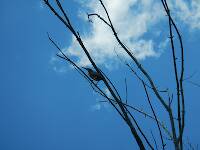
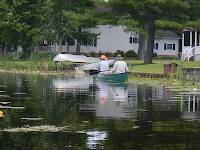
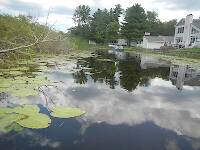
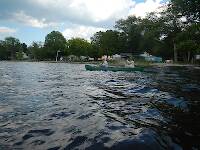
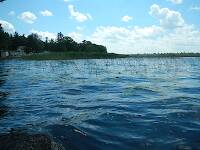
In the Photography Board by Jmd123
+ 15





In the Photography Board by Jmd123
8
Aug 8, 2019
by Jmd123
by Jmd123
4
Sep 29, 2016
by Wiflyfisher
by Wiflyfisher






